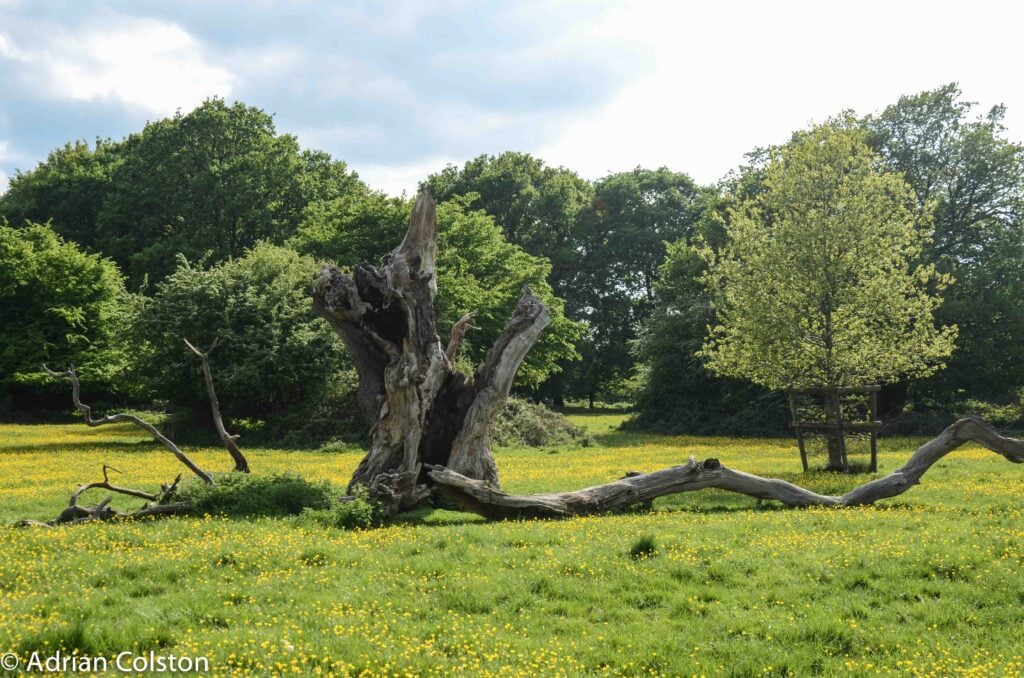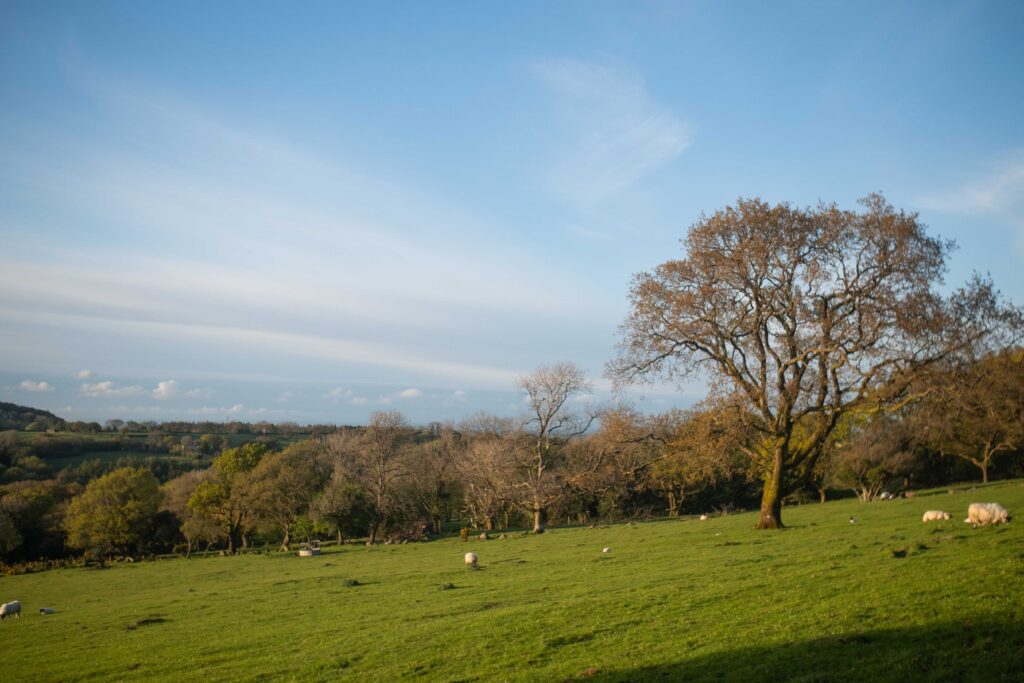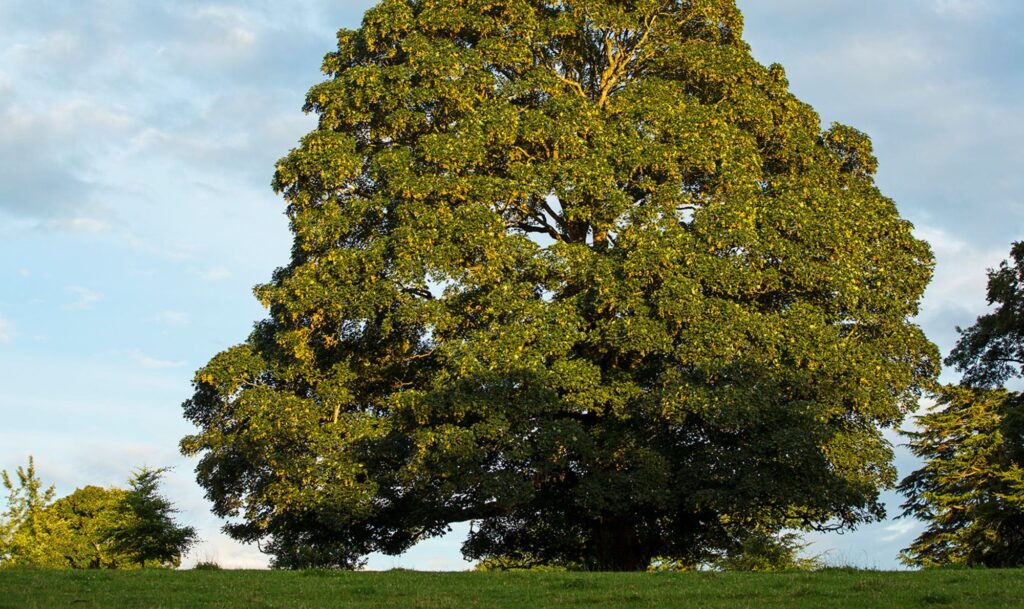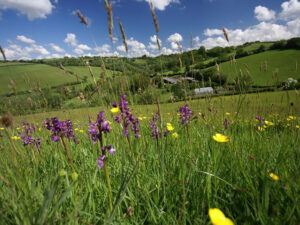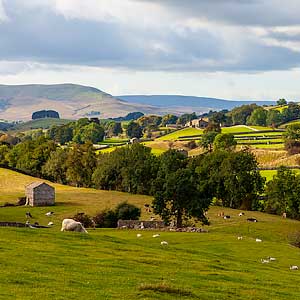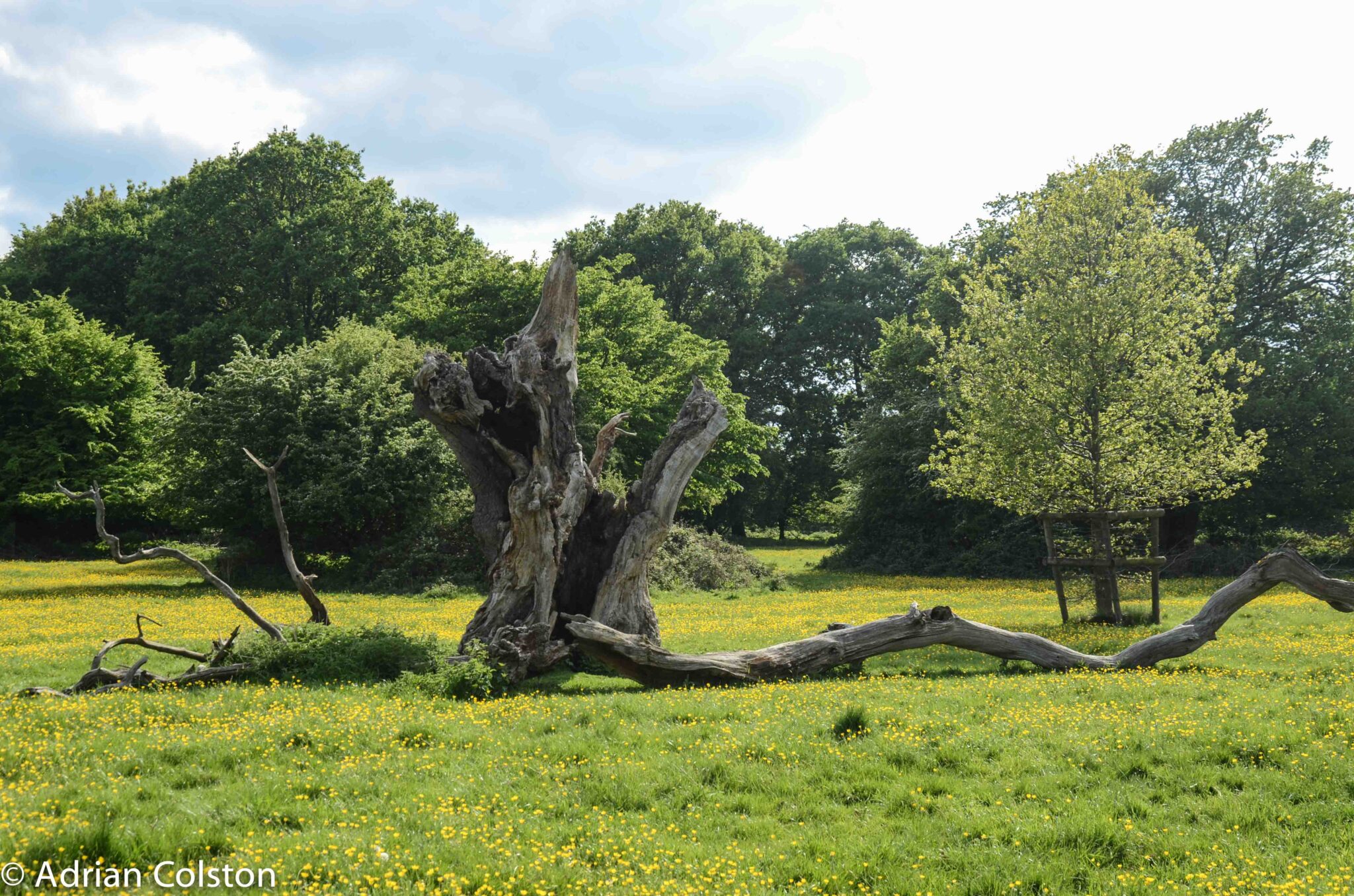What wildlife-rich looks like:
Scattered ancient and veteran treesA tree that has reached a great age compared to others of the same species and has cultural, landscape or biodiversity value. Ancient trees are veteran trees, but not all veteran trees are old enough to be ancient. More with dead and decaying wood, hollows and cracks supporting a wealth of wildlife including fungi, lichens, insects, roosting bats and nesting birds. Younger trees are growing and will become future veteran trees. Mosaics of habitats with wildlife-rich grasslands full of insects and flowers, patches of scrub, ponds and bushy hedges.

